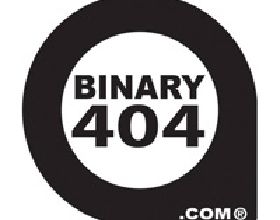乾隆通寶,就是由於清高宗乾隆皇帝於公元1735年即位,在位的60年裡施展其"文治武功"的治國策略,創造了封建社會里最後一個輝煌盛世,之後民間便盛傳佩帶"乾隆通寶"銅錢可驅災辟邪,又因乾隆二字諧音"錢隆"而備受後世藏家所喜愛的錢幣。
乾隆通寶連寶泉、寶源在內先後有29局開鑄,多用黃銅與青銅,也引進國外洋銅澆製法。新疆地區新用方孔圓錢,開設伊犁、阿克蘇、烏什、葉爾羌、喀什葛爾、庫車等局,因用自產紅銅鼓鑄、故稱為"新疆紅錢"或"普爾錢"("普爾"維語即錢的意思)。乾隆通寶只少數錢背文看見星號或漢字。乾隆通寶還有合面錢、吉語錢以及私鑄劣質錢、鵝眼錢等,品類不下百種,存於世上的有雕母數種,至為珍貴。
由於錢幣在歷代就具有很高的收藏價值,故在各個歷史時期均有仿冒錢幣出現,如何鑑定其真偽難度較大。鑑定真偽一定要從錢幣的形狀、質地、包漿、文字和製作工藝等諸多方面來識別。每一時期的錢幣,形狀、質地和文字都有其獨特的風格和特徵。各個歷史時期的鑄造工藝不盡相同,仿冒者不可能完全把握。錢幣的價值如何,要看錢幣的年代和存世的數量多寡來確定。錢幣不僅有經濟價值,更有歷史價值和藝術價值,而歷史價值和藝術價值又直接影響著經濟價值。
Qianlong TongBao, is due to the qing dynasty the emperor qianlong emperor acceded to the throne in 1735 AD, in the 60 years of its "tai temple" governing strategy, create the brilliant outstanding achievement in the feudal society in the last millennium, after folk rumours that wear "qianlong TongBao" copper can drive off evil, and because of the word "qianlong homophonic" Qian Long "by later generations collectors favorite COINS.
In The Qianlong Period, there were 29 bureaus including Tongbao, Baoquan and Baoyuan, which used brass and bronze, and also introduced foreign copper casting method. In Xinjiang, square hole round money was newly used, and bureaux in Yili, Aksu, Wushi, Yarqiang, Kashgar and Kuqa were opened. The bureaux were called "Xinjiang Red money" or "Pulqian "(" Pulqian" means money in Uyghur) because of the use of self-produced red drums. Qianlong Tongbao only saw asterisks or Chinese characters on his back. Qianlong Tongbao also has more than 100 kinds of dough money, auspicious language money, private cast inferior money, goose eye money, etc. There are several kinds of diaomu in the world, which are most precious.
Because coins have a high collection value in all dynasties, counterfeit coins appear in all historical periods, and it is difficult to identify their authenticity. Authenticity must be identified from the shape, texture, coating, text and production process of the coin. The shape, texture and characters of coins in each period have their own unique style and characteristics. The casting process in different historical periods is not the same, and imitators can not completely grasp. The value of money depends on the age and number of coins. Coins not only have economic value, but also have historical value and artistic value, which directly affect economic value.

















